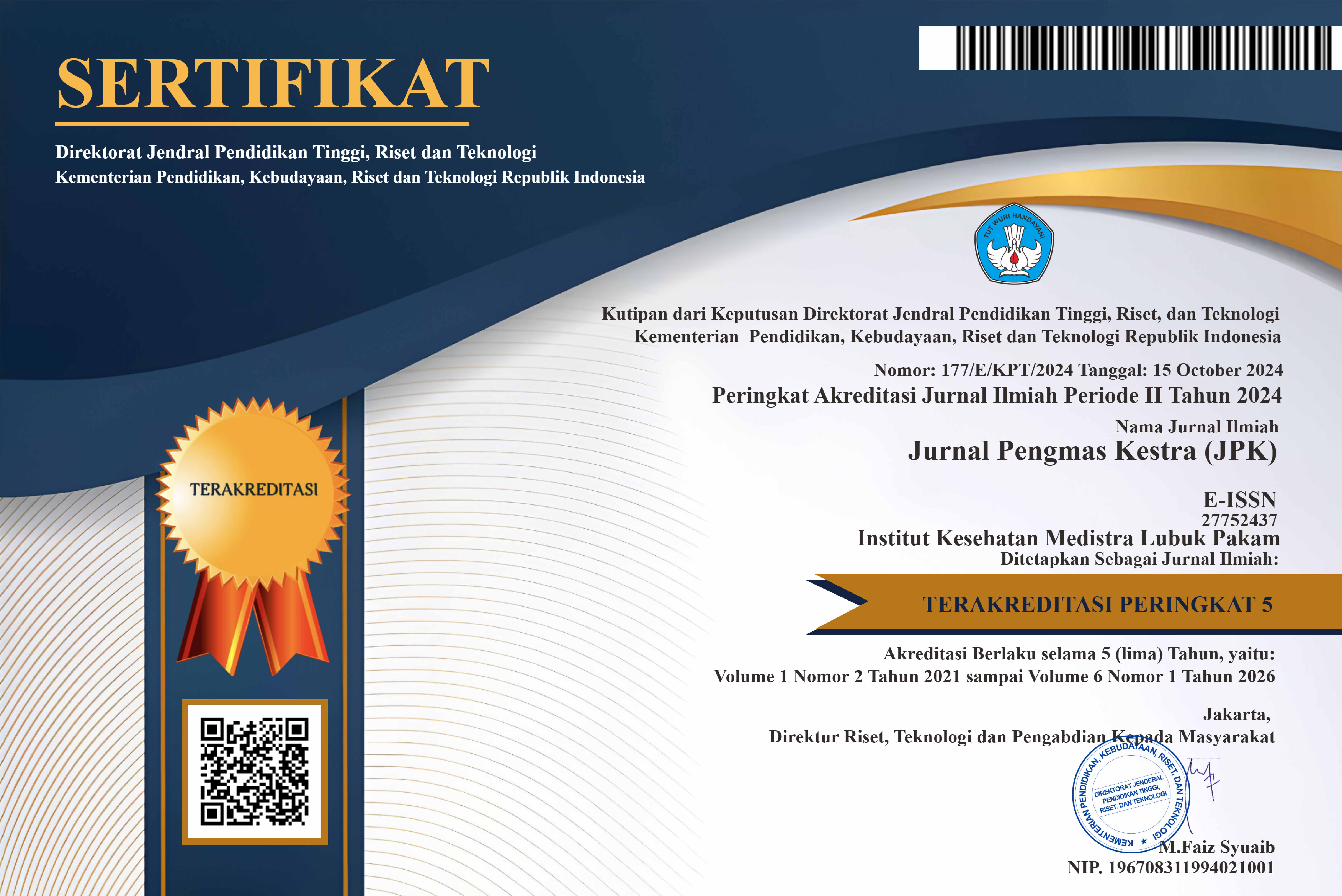Education about Ergonomics in the Workplace to Overcome Neck Pain in Computer Users
DOI:
https://doi.org/10.35451/jpk.v3i2.1978Keywords:
Education, Ergonomic, Computer User, WorkplaceAbstract
In an era where information technology has become an integral part of everyday life, the use of computers in the workplace has become the norm. Employees spend hours in front of computer screens to complete their tasks. However, a less recognized impact of prolonged exposure to computer devices is health problems, especially neck, shoulder and back pain. Ergonomics issues in computer use have become a major concern in today's work environment. This PKM activity aims to increase awareness of ergonomics in the workplace and overcome neck pain in workers who use computers regularly. Involving 45 participants, this activity focused on providing education that prioritizes ergonomic principles. Through presentations, discussions and live demonstrations, participants are provided with an in-depth understanding of the importance of correct work posture and the practical implementation of ergonomics principles in daily work routines. Initial assessment results showed that the majority of participants had unergonomic working postures. However, after participating in this activity, there was a significant increase in their understanding of ergonomics and awareness of the importance of correct posture in the workplace. The ergonomic solutions presented, such as chair arrangement, monitor position, and use of ergonomic accessories, were welcomed by participants as real steps in reducing neck pain. This article emphasizes the importance of awareness and practical application of ergonomics in the workplace to improve work health and comfort. It is hoped that this service can make a real contribution in reducing health problems such as neck pain in workers who use computers intensively, as well as improving the quality of their work
References
Gosain, L., Ahmad, I., Rizvi, M. R., Sharma, A., & Saxena, S. (2022). Prevalence of musculoskeletal pain among computer users working from home during the COVID-19 pandemic: a cross-sectional survey. Bulletin of Faculty of Physical Therapy, 27(1). https://doi.org/10.1186/s43161-022-00110-x
Ikwubiela, E., Danjuma, B., Baba, D., & Omatule, J. (2021). Effect of Office Ergonomics on Office Workers’ Productivity in the Polytechnics, Nigeria. Journal of Education and Practice, 12(3), 67–75. https://doi.org/10.7176/jep/12-3-10
Irmayani., Ginting, R.,Samura, J., Parinduri, AI., Ginting, LR.,Sari, DP., (2023). Faktor-Faktor yang Berhubungan dengan Keluhan Nyeri Leher dan Bahu Pada Stafkantor Pengguna Komputer di Wilayah Puskesmas Deli Serdang. Jurnal Kebidanan Kestra (JKK). Vol. 6 No. 1. DOI: 10.35451/jkk.v6i1.1923
Junaedi, D. I. (2021). Penerapan Faktor Ergonomi pada Laboratorium Komputer STMIK Sumedang Dalam Menunjang Kenyamanan Pengguna. Jurnal Ilmu-Ilmu Informatika Dan Manajemen STMIK, 15(1), 1–10.
Kumar, S., Chinchodkar, K. N., & Bute, J. (2023). The prevalence of musculoskeletal disorders among computer related professionals of Dahod City, Gujarat: a cross sectional study. International Journal Of Community Medicine And Public Health, 10(5), 1836–1840. https://doi.org/10.18203/2394-6040.ijcmph20231282
Navidi, S. F., Kar, M. K., Jahan, M. G., & Varmazyar, S. (2022). Effects of Ergonomics Training and Corrective Exercises on Musculoskeletal Disorders among Office Computer Users at Qazvin Province Gas Company. Journal of Occupational Health and Epidemiology, 11(3), 246–255. https://doi.org/10.52547/johe.11.3.246
Pramono, T., Sayuti, A. M., Gaffar, M. R., & Puspitaningrum, R. A. (2022). Penilaian Risiko Ergonomi Pada Lingkungan Kerja Perkantoran Menggunakan Metode Rapid Office Strain Assessment (ROSA). Jurnal Pendidikan Administrasi Perkantoran (JPAP), 10(3), 246–255. https://doi.org/10.26740/jpap.v10n3.p246-255
Sirajudeen, M. S., Alzhrani, M., Alanazi, A., Alqahtani, M., Waly, M., Manzar, M. D., Hegazy, F. A., Mohd Jamali, M. N. Z., Reddy, R. S., Kakaraparthi, V. N., Unnikrishnan, R., Muthusamy, H., Alrubaia, W., Alanazi, N., Kashoo, F. Z., & Miraj, M. (2022). Prevalence of Upper Limb Musculoskeletal Disorders and Their Association with Smartphone Addiction and Smartphone Usage among University Students in the Kingdom of Saudi Arabia during the COVID-19 Pandemic—A Cross-Sectional Study. Healthcare (Switzerland), 10(12), 1–15. https://doi.org/10.3390/healthcare10122373
Sohrabi, M. S., & Babamiri, M. (2022). Effectiveness of an ergonomics training program on musculoskeletal disorders, job stress, quality of work-life and productivity in office workers: a quasi-randomized control trial study. International Journal of Occupational Safety and Ergonomics, 28(3), 1664–1671. https://doi.org/10.1080/10803548.2021.1918930
Downloads
Published
Issue
Section
License
Copyright (c) 2023 Irmayani Irmayani, Rosita Ginting, Sri Melda Bangun, Jul Asdar Putra Samura, Anggi Parinduri

This work is licensed under a Creative Commons Attribution 4.0 International License.
Copyright in each article is the property of the Author.




















